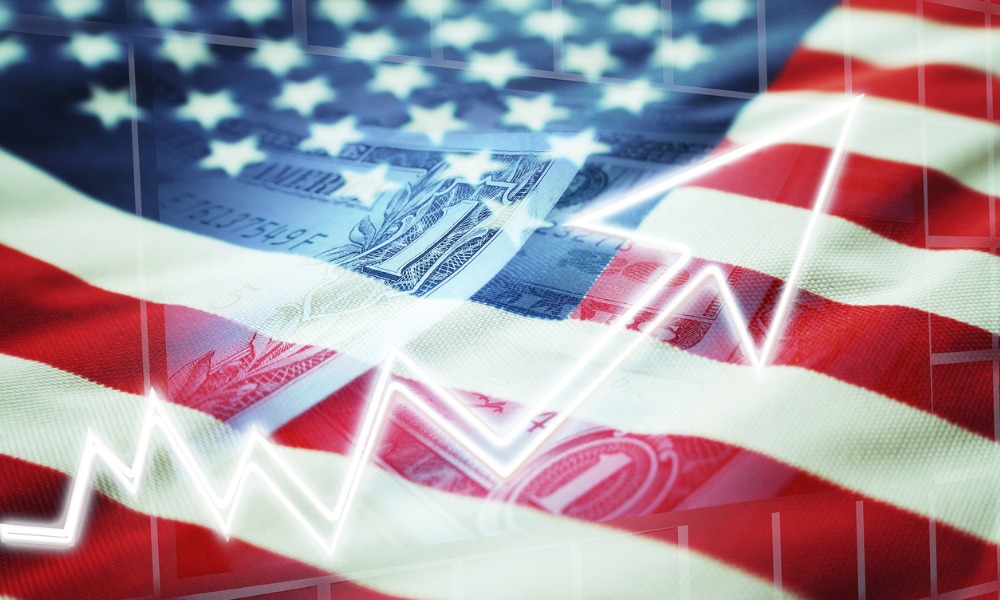Consumer spending slows slightly, but inflation eases as the Federal Reserve shifts focus to job growth

The US economy grew at a 3 percent annual rate from April through June, driven by robust consumer spending and business investment, as confirmed by the government's unchanged estimate.
BNN Bloomberg reported the Commerce Department's announcement that gross domestic product (GDP) for the second quarter increased significantly compared to the 1.6 percent growth in the first quarter.
Consumer spending, the key driver of economic growth, expanded at a 2.8 percent rate, a slight revision from the earlier 2.9 percent estimate. Business investment also surged, growing at an 8.3 percent annual rate, largely due to a 9.8 percent rise in equipment investments.
Inflation eased during the same period, nearing the Federal Reserve’s 2 percent target. The personal consumption expenditures (PCE) index, the Fed’s preferred inflation gauge, increased by 2.5 percent annually, down from 3 percent in the first quarter.
Core PCE inflation, which excludes volatile food and energy prices, grew by 2.8 percent, a drop from 3.7 percent earlier this year.
Despite a series of 11 interest rate hikes in 2022 and 2023 aimed at curbing inflation, the US economy showed remarkable resilience. Inflation, which peaked at 9.1 percent in mid-2022, has now fallen to 2.5 percent, according to the consumer price index.
However, job market growth has slowed recently. From June to August, employers added an average of 116,000 jobs monthly, the lowest three-month average since mid-2020. The unemployment rate rose to 4.2 percent, up from last year's 3.4 percent.
Last week, the Federal Reserve responded to easing inflation and a slowing job market by cutting its benchmark interest rate by half a percentage point, its first-rate reduction in more than four years. The Fed now focuses on stabilizing the job market, given the progress in controlling inflation.
Bill Adams, chief economist at Comerica Bank, wrote, “The economy is in pretty good shape.” He expects interest rate-sensitive sectors, such as housing, manufacturing, and auto sales, to improve following the September rate cut.
Adams also forecasts further rate cuts by early 2025, which could stimulate job growth and stabilize unemployment at its current rate in 2025.
Several economic indicators continue to show strength. Retail spending rose in the previous month, signalling that consumers are still willing to spend despite inflationary pressures and higher borrowing rates.
Industrial production also increased, and single-family home construction accelerated compared to last year. The University of Michigan reported that consumer sentiment improved for a third consecutive month, driven by more favourable pricing on durable goods such as cars and appliances.
The economy's underlying strength, as measured by a specific GDP category that excludes volatile elements like exports and government spending, increased at a 2.7 percent annual rate, though it declined slightly from 2.9 percent in the first quarter.
Although inflation has mostly been subdued, many Americans remain frustrated with the persistently high costs of groceries, gas, rent, and other necessities. Former President Donald Trump has criticized the Biden-Harris administration, holding it responsible for the inflation surge.
In contrast, Vice President Kamala Harris argues that Trump’s proposed tariffs on imports would further drive-up prices for consumers.
The Commerce Department also revised previous GDP figures, reporting that from 2018 through 2023, growth averaged 2.3 percent annually, up from the previously reported 2.1 percent. In 2022, the economy grew by 2.9 percent, revised from an earlier estimate of 2.5 percent.
The third and final GDP estimate for the second quarter confirms these figures, and the initial estimate for the July-September period is expected on October 30. The Federal Reserve Bank of Atlanta forecasts a 2.9 percent growth rate for that period.



